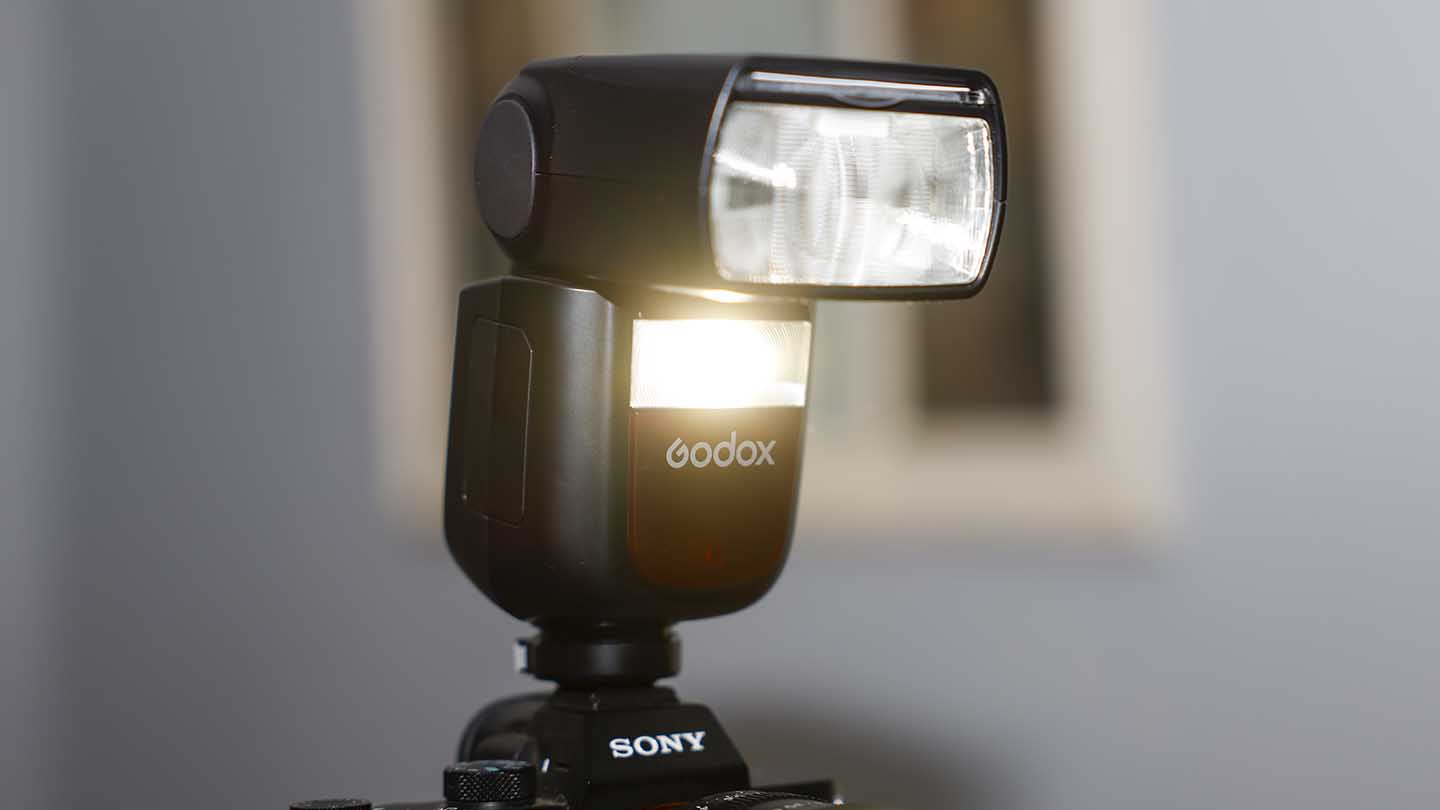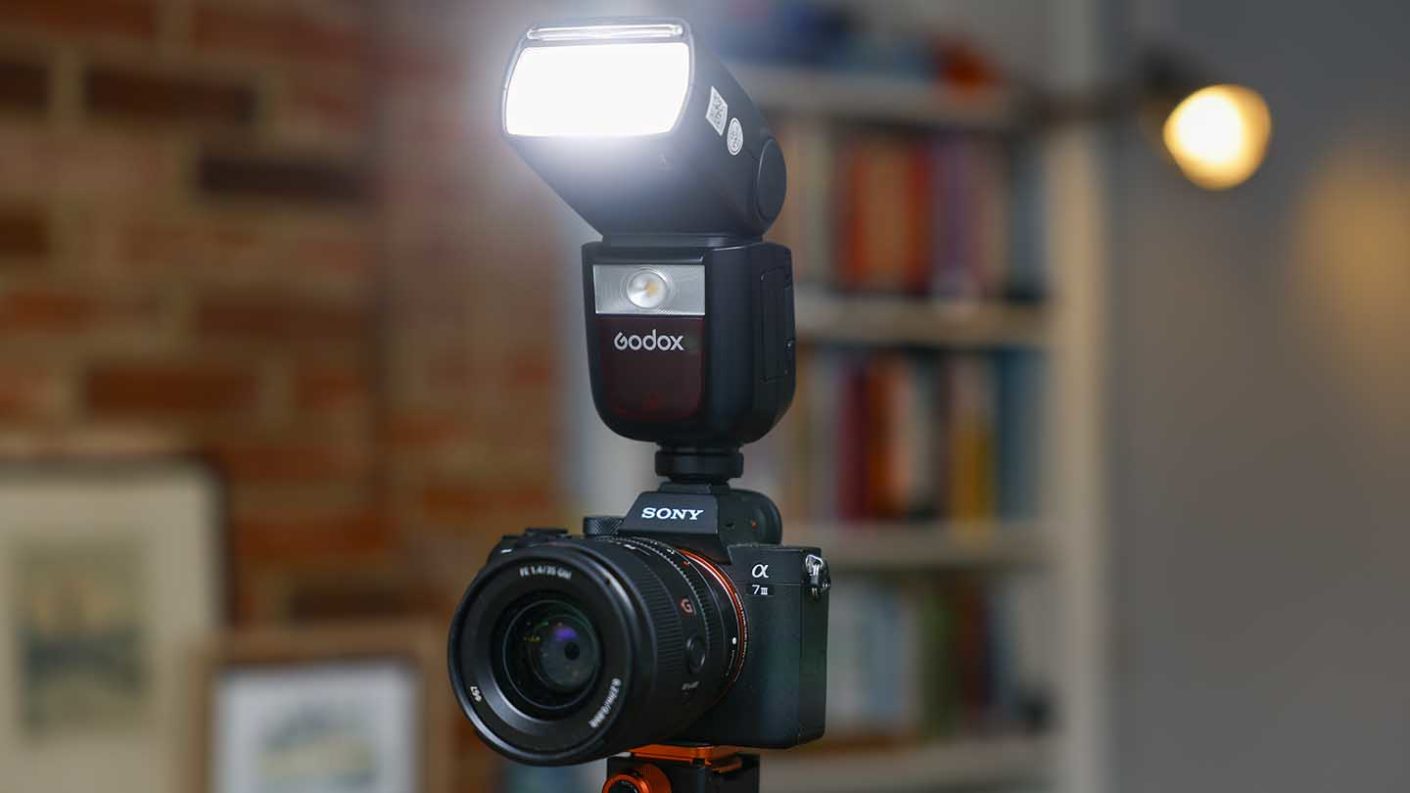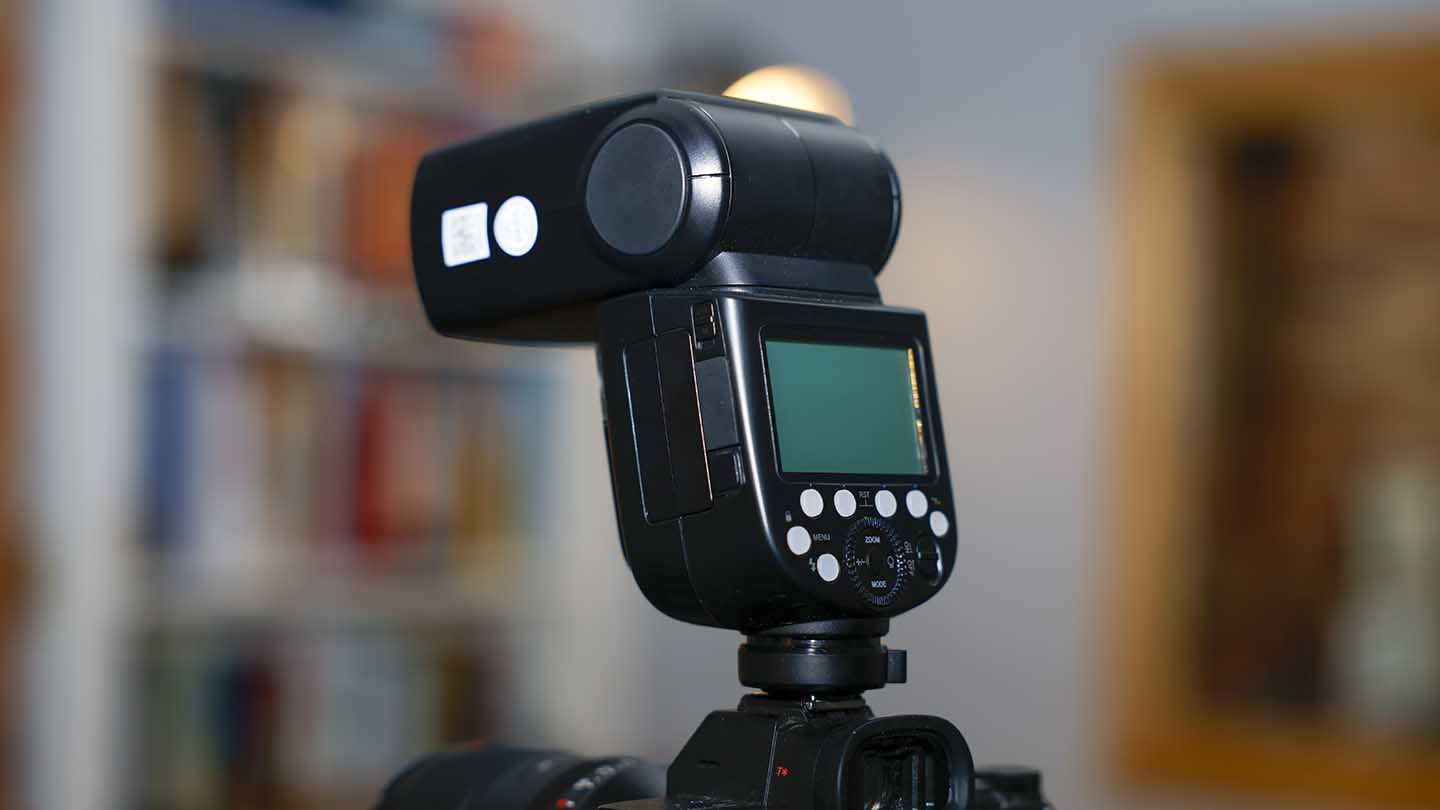The flash arrives in a decent fabric protective case and includes a simple flash stand which will come in use when the flash is used off-camera. This stand features a standard 1/4-inch thread on the base, so it is easily mountable on a standard tripod.
Being of the standard box style design, anyone familiar with a standard camera flash will recognise the main controls and features. There’s also plenty of adjustment in the angle of the head and it’s all of really high quality.
Popping the flash onto the camera, in this case, a Sony A7 III, the contacts on the flash connect directly with the data port on the camera’s hotshoe. Again this simply means that the flash is dedicated, so this Sony version will only work with Sony cameras. Once in place, the lock collar can be rotated to hold everything securely in place. This collar is the only thing that feels a little cheap about the whole flash.
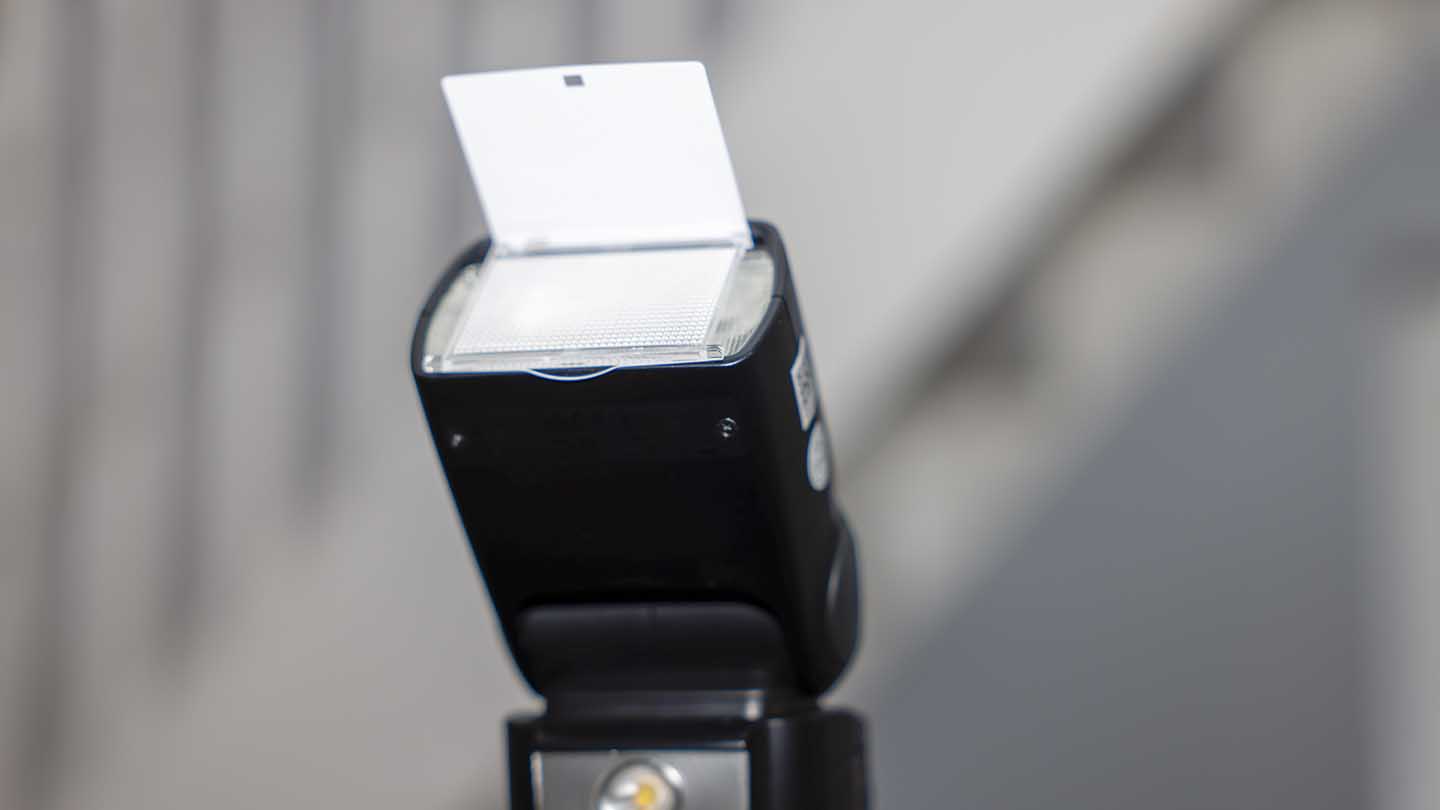
Switching on through a small slide switch on the back, and after a second, the screen flashes to life. Before looking at the settings, a quick check on the side and another switch enable you to flip between manual and TTL. At the start of this test, I’ll stick to TTL and then migrate to manual later.
Firing off a couple of test shots and it’s instantly apparent that this flash has some serious power, and tilting the head up to bounce off the ceiling with the bounce card extracted the fall of illumination from the flash does the job of lighting my subject a couple of metres away. The tilt and bounce have exposured the subject well using the TTL function. Overall illumination and colour temperature all look good and natural.
Further playing with the flash reveals this flash’s depth of quality. The refresh rate at around 50-75% power is far less than a second, and only after several hours of shooting did that refresh rate start to slow. In most use I didn’t have to wait for the recycle time, it was just primed and ready.
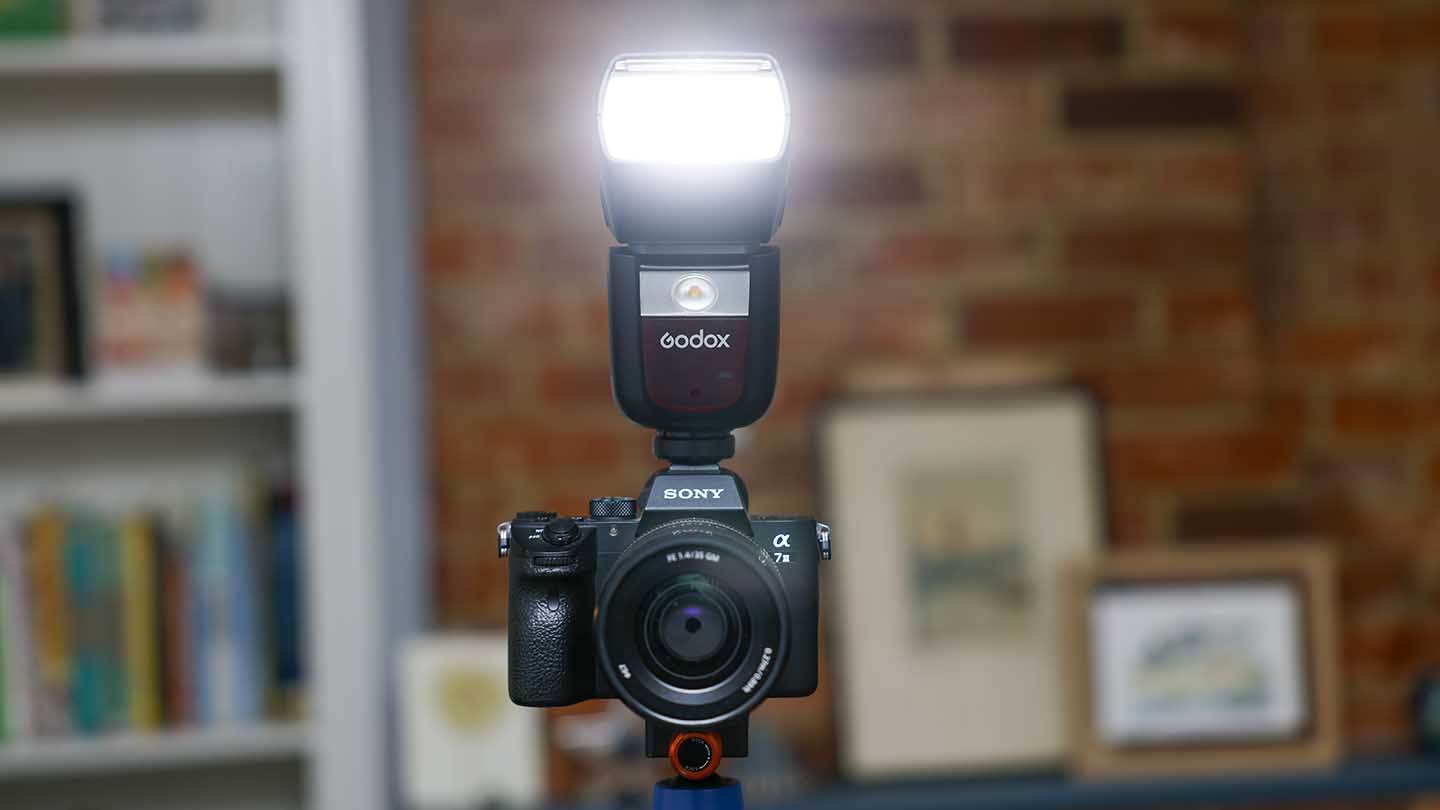
A big part of the reason for this is the large capacity battery that slots into the side of the flash and is the same as the one used in the Pro level V1. The overall performance is excellent, and for most people, and quality-wise is enough to rival many manufacturer’s mid-range models at half the price.
In TTL mode, the flash can quickly compensate with the direct controls of your camera, if compatible. The process for on-flash adjustment is very easy, just push the set button, then the +/- to adjust the compensation and set it again to select.
The next check was to take the flash beyond the standard flash sync speed by utilising the HSS function. Activating this will drop the power of the flash, but as HSS is designed to be used when you need to boost the shutter speed beyond the cameras native flash sync speed, that’s more than acceptable.
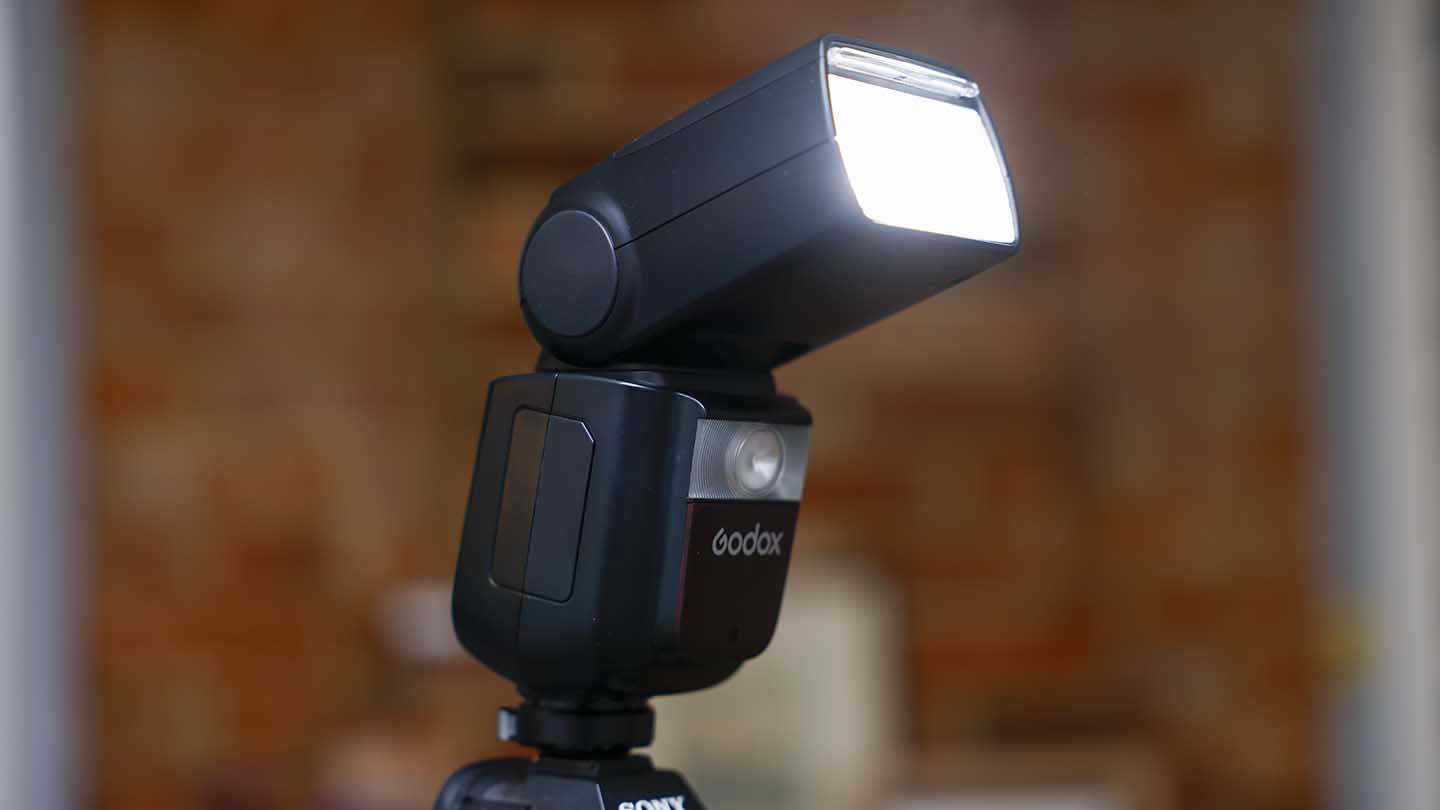
As with other Godox products, it’s worth taking the manual with you on initial expeditions as some of the access to the functions and features can be a little tricky to locate. To access HSS, you push the second button in from the left below the LCD – when you look at the screen, it does make sense, but as with many flashguns, it does take a while to find all the additional features.
Once you push the button and the HSS icon appears, you’re ready to shoot. Open up the aperture, increase the shutter speed to 1/8000 and take the picture. Again this all works smoothly. The front and rear curtain flashes are two other features along a similar vein. Again pushing button two flips you through the options, and a quick manual check shows whether you’ve opted for the right one!
Switching the flash to the manual is pretty straightforward and enables you full control over the use of your flash with a good amount of adjustment that should suit most users.

The final big feature is the wireless control, the Godox VING V860III SPEEDLIGHT is shown to work with the X2, but in this review, I’ve been using it with the older X1 wireless trigger with good results.
As with any wireless trigger system, selecting the right channel and group is just a case. The channel is the main communication, and the group feature enables you to split multiple flashes into groups. So you could have two main lights at 50% power in Group A, Two at 25% doing some back illumination in group B and one flash for a bit of fill-in at 10% in group C.
What I like about the Godox products is that there is good compatibility across their range, so this flash will communicate with other Godox Wireless flash triggers and flash guns. This means you can start with the V860III and then add to the system with the V1 and other larger studio units when you need.
